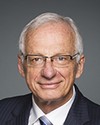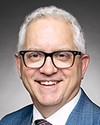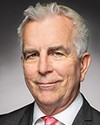Thank you very much. I'm coming to you today from the unceded territory of the Mi'kmaq in Nova Scotia.
Hello. It's nice to see all of you. Thank you so much for your incredible presentations.
I am so deeply sorry that your nations are concerned about and going through so many different things. However, at this point I'm very glad to see that there have not been too many illnesses yet on reserve. I really hope that the second and third waves don't hit you at all. We've seen what diseases like this can do to first nations people and Inuit people, and we don't want this to ever happen now, in this day and age.
On May 15, we had a presentation at this committee from Ms. Hilda Anderson-Pyrz, the co-chair of the missing and murdered women coalition of Manitoba. She told our committee that youth mental health is a critical area requiring action, particularly since many indigenous communities were dealing with mental health crises prior to the pandemic.
We also had Ms. Redvers, who is the co-founder and executive director of the youth support organization We Matter. She explained to us that indigenous youth are finding new ways to remain connected online. However, she noted an increase in anxiety, depression, suicidal ideation, self-harm and hopelessness, and she said the youth are turning to unhealthy coping mechanisms.
I would like to ask if somebody can explain to me how the current pandemic is affecting the youth in your communities and what we can do, what the government can do in the long term, to address the mental health crises affecting many indigenous communities and their youth.
Could we please start with Mr. Therrien Pinette? I'd also like to hear from Dr. Vollant and Madam Meawasige, if possible.





